Form 2 Grant Report - 2020 UDS Tables Redline
2020 HRSA Uniform Data System (UDS)
2020 UDS Tables_redline
Uniform Data System
OMB: 0915-0193
OMB No. 0915-0193
Expires: XX/XX/20XX

Table: Patients by ZIP Code
Reporting Period: January 1, 2019, through December 31, 2019
ZIP Code (a) |
None/ Uninsured (b) |
Medicaid/ CHIP/Other Public (c) |
Medicare (d) |
Private (e) |
Total Patients (f) |
[Blank for demonstration] |
|
|
|
|
|
[Blank for demonstration] |
|
|
|
|
|
Other ZIP Codes |
|
|
|
|
|
Unknown Residence |
|
|
|
|
|
Total |
|
|
|
|
|
 Note:
This is a representation of
the form. The actual online input process looks significantly
different and the printed output from the EHBs may be modified.
Note:
This is a representation of
the form. The actual online input process looks significantly
different and the printed output from the EHBs may be modified.
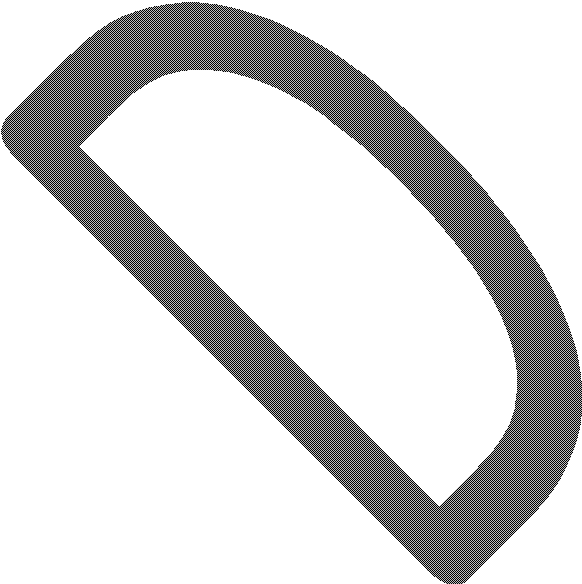
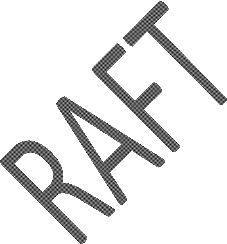 Table
3A: Patients by Age and by Sex Assigned at Birth
Table
3A: Patients by Age and by Sex Assigned at Birth
Reporting Period: January 1, 2019, through December 31, 2019
Line |
Age Groups |
Male Patients (a) |
Female Patients (b) |
1 |
Under age 1 |
|
|
2 |
Age 1 |
|
|
3 |
Age 2 |
|
|
4 |
Age 3 |
|
|
5 |
Age 4 |
|
|
6 |
Age 5 |
|
|
7 |
Age 6 |
|
|
8 |
Age 7 |
|
|
9 |
Age 8 |
|
|
10 |
Age 9 |
|
|
11 |
Age 10 |
|
|
12 |
Age 11 |
|
|
13 |
Age 12 |
|
|
14 |
Age 13 |
|
|
15 |
Age 14 |
|
|
16 |
Age 15 |
|
|
17 |
Age 16 |
|
|
18 |
Age 17 |
|
|
19 |
Age 18 |
|
|
20 |
Age 19 |
|
|
21 |
Age 20 |
|
|
22 |
Age 21 |
|
|
23 |
Age 22 |
|
|
24 |
Age 23 |
|
|
25 |
Age 24 |
|
|
26 |
Ages 25–29 |
|
|
27 |
Ages 30–34 |
|
|
28 |
Ages 35–39 |
|
|
29 |
Ages 40–44 |
|
|
30 |
Ages 45–49 |
|
|
31 |
Ages 50–54 |
|
|
32 |
Ages 55–59 |
|
|
33 |
Ages 60–64 |
|
|
34 |
Ages 65–69 |
|
|
35 |
Ages 70–74 |
|
|
36 |
Ages 75–79 |
|
|
37 |
Ages 80–84 |
|
|
38 |
Age 85 and over |
|
|
39 |
Total Patients (Sum of Lines 1-38) |
|
|
Table 3B: Demographic Characteristics
Reporting Period: January 1, 2019, through December 31, 2019
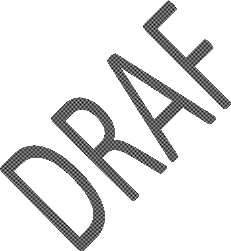
 Patients
by Race and Hispanic or Latino Ethnicity
Patients
by Race and Hispanic or Latino Ethnicity
Line |
Patients by Race |
Hispanic/ Latino (a) |
Non- Hispanic/ Latino (b) |
Unreported/Refused to Report Ethnicity (c) |
Total (d) (Sum Columns a+b+c) |
1 |
Asian |
|
|
|
|
2a |
Native Hawaiian |
|
|
|
|
2b |
Other Pacific Islander |
|
|
|
|
2 |
Total Native Hawaiian/Other Pacific Islander (Sum Lines 2a + 2b) |
|
|
|
|
3 |
Black/African American |
|
|
|
|
4 |
American Indian/Alaska Native |
|
|
|
|
5 |
White |
|
|
|
|
6 |
More than one race |
|
|
|
|
7 |
Unreported/Refused to report race |
|
|
|
|
8 |
Total Patients (Sum of Lines 1 + 2 + 3 to 7) |
|
|
|
|
Line |
Patients Best Served in a Language Other than English |
Number (a) |
12 |
Patients Best Served in a Language Other than English |
|
Line |
Patients by Sexual Orientation |
Number (a) |
|
Line |
Patients by Gender Identity |
Number (a) |
13 |
Lesbian or Gay |
|
20 |
Male |
|
|
14 |
Straight (not lesbian or gay) |
|
21 |
Female |
|
|
15 |
Bisexual |
|
22 |
Transgender Male/Female-to- Male |
|
|
16 |
Something else |
|
23 |
Transgender Female/Male-to- Female |
|
|
17 |
Don’t know |
|
24 |
Other |
|
|
18 |
Chose not to disclose |
|
25 |
Chose not to disclose |
|
|
19 |
Total Patients (Sum of Lines 13 to 18) |
|
26 |
Total Patients (Sum of Lines 20 to 25) |
|
Table 4: Selected Patient Characteristics
Reporting Period: January 1, 2019, through December 31, 2019

Line |
Income as Percent of Poverty Guideline |
Number of Patients (a) |
1 |
100% and below |
|
2 |
101–150% |
|
3 |
151–200% |
|
4 |
Over 200% |
|
5 |
Unknown |
|
6 |
TOTAL (Sum of Lines 1–5) |
|
Line |
Principal Third-Party Medical Insurance |
0-17 years old (a) |
18 and older (b) |
7 |
None/Uninsured |
|
|
8a |
Medicaid (Title XIX) |
|
|
8b |
CHIP Medicaid |
|
|
8 |
Total Medicaid (Line 8a + 8b) |
|
|
9a |
Dually Eligible (Medicare and Medicaid) |
|
|
9 |
Medicare (Inclusive of dually eligible and other Title XVIII beneficiaries) |
|
|
10a |
Other Public Insurance (Non-CHIP) (specify) |
|
|
10b |
Other Public Insurance CHIP |
|
|
10 |
Total Public Insurance (Line 10a + 10b) |
|
|
11 |
Private Insurance |
|
|
12 |
TOTAL (Sum of Lines 7 + 8 + 9 +10 +11) |
|
|
Line |
Managed Care Utilization |
Medicaid (a) |
Medicare (b) |
Other Public Including Non- Medicaid CHIP (c) |
Private (d) |
TOTAL (e) |
13a |
Capitated Member Months |
|
|
|
|
|
13b |
Fee-for-service Member Months |
|
|
|
|
|
13c |
Total Member Months (Sum of Lines 13a + 13b) |
|
|
|
|
|
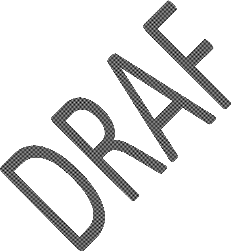 Table
4: Selected Patient Characteristics (continued)
Table
4: Selected Patient Characteristics (continued)
Reporting Period: January 1, 2019, through December 31, 2019

Line |
Special Populations |
Number of Patients (a) |
14 |
Migratory (330g awardees only) |
|
15 |
Seasonal (330g awardees only) |
|
16 |
Total Agricultural Workers or Dependents (All health centers report this line) |
|
17 |
Homeless Shelter (330h awardees only) |
|
18 |
Transitional (330h awardees only) |
|
19 |
Doubling Up (330h awardees only) |
|
20 |
Street (330h awardees only) |
|
21a |
Permanent Supportive Housing (330h awardees only) |
|
21 |
Other (330h awardees only) |
|
22 |
Unknown (330h awardees only) |
|
23 |
Total Homeless (All health centers report this line) |
|
24 |
Total School-Based Health Center Patients (All health centers report this line) |
|
25 |
Total Veterans (All health centers report this line) |
|
26 |
Total Patients Served at a Health Center Located In or Immediately Accessible to a Public Housing Site (All health centers report this line) |
|
Table 5: Staffing and Utilization
Reporting Period: January 1, 2019, through December 31, 2019
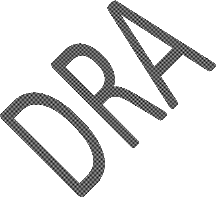

Line |
Personnel by Major Service Category |
FTEs (a) |
Clinic Visits (b) |
Virtual Visits (b2) |
Patients (c) |
1 |
Family Physicians |
|
|
|
|
2 |
General Practitioners |
|
|
|
|
3 |
Internists |
|
|
|
|
4 |
Obstetrician/Gynecologists |
|
|
|
|
5 |
Pediatricians |
|
|
|
|
7 |
Other Specialty Physicians |
|
|
|
|
8 |
Total Physicians (Lines 1–7) |
|
|
|
|
9a |
Nurse Practitioners |
|
|
|
|
9b |
Physician Assistants |
|
|
|
|
10 |
Certified Nurse Midwives |
|
|
|
|
10a |
Total NPs, PAs, and CNMs (Lines 9a–10) |
|
|
|
|
11 |
Nurses |
|
|
|
|
12 |
Other Medical Personnel |
|
|
|
|
13 |
Laboratory Personnel |
|
|
|
|
14 |
X-ray Personnel |
|
|
|
|
15 |
Total Medical (Lines 8 + 10a through 14) |
|
|
|
|
16 |
Dentists |
|
|
|
|
17 |
Dental Hygienists |
|
|
|
|
17a |
Dental Therapists |
|
|
|
|
18 |
Other Dental Personnel |
|
|
|
|
19 |
Total Dental Services (Lines 16–18) |
|
|
|
|
20a |
Psychiatrists |
|
|
|
|
20a1 |
Licensed Clinical Psychologists |
|
|
|
|
20a2 |
Licensed Clinical Social Workers |
|
|
|
|
20b |
Other Licensed Mental Health Providers |
|
|
|
|
20c |
Other Mental Health Staff |
|
|
|
|
20 |
Total Mental Health (Lines 20a–c) |
|
|
|
|
21 |
Substance Use Disorder Services |
|
|
|
|
22 |
Other Professional Services (specify ) |
|
|
|
|
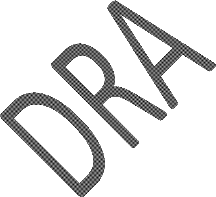
 Table
5: Staffing and Utilization (continued)
Table
5: Staffing and Utilization (continued)
Reporting Period: January 1, 2019, through December 31, 2019
Line |
Personnel by Major Service Category |
FTEs (a) |
Clinic Visits (b) |
Virtual Visits (b2) |
Patients (c) |
22a |
Ophthalmologists |
|
|
|
|
22b |
Optometrists |
|
|
|
|
22c |
Other Vision Care Staff |
|
|
|
|
22d |
Total Vision Services (Lines 22a–c) |
|
|
|
|
23 |
Pharmacy Personnel |
|
|
|
|
24 |
Case Managers |
|
|
|
|
25 |
Patient/Community Education Specialists |
|
|
|
|
26 |
Outreach Workers |
|
|
|
|
27 |
Transportation Staff |
|
|
|
|
27a |
Eligibility Assistance Workers |
|
|
|
|
27b |
Interpretation Staff |
|
|
|
|
27c |
Community Health Workers |
|
|
|
|
28 |
Other Enabling Services (specify ) |
|
|
|
|
29 |
Total Enabling Services (Lines 24–28) |
|
|
|
|
29a |
Other Programs/Services (specify ) |
|
|
|
|
29b |
Quality Improvement Staff |
|
|
|
|
30a |
Management and Support Staff |
|
|
|
|
30b |
Fiscal and Billing Staff |
|
|
|
|
30c |
IT Staff |
|
|
|
|
31 |
Facility Staff |
|
|
|
|
32 |
Patient Support Staff |
|
|
|
|
33 |
Total Facility and Non-Clinical Support Staff (Lines 30a–32) |
|
|
|
|
34 |
Grand Total (Lines 15+19+20+21+22+22d+23+29+29a+29b+33) |
|
|
|
|
 Table
5: Selected Service Detail Addendum
Table
5: Selected Service Detail Addendum
Reporting Period: January 1, 2019, through December 31, 2019
Line |
Personnel by Major Service Category: Mental Health Service Detail |
Personnel (a1) |
Clinic Visits (b) |
Virtual Visits (b2) |
Patients (c) |
20a01 |
Physicians (other than Psychiatrists) |
|
|
|
|
20a02 |
Nurse Practitioners |
|
|
|
|
20a03 |
Physician Assistants |
|
|
|
|
20a04 |
Certified Nurse Midwives |
|
|
|
|
Line |
Personnel by Major Service Category: Substance Use Disorder Detail |
Personnel (a1) |
Clinic Visits (b) |
Virtual Visits (b2) |
Patients (c) |
21a |
Physicians (other than Psychiatrists) |
|
|
|
|
21b |
Nurse Practitioners (Medical) |
|
|
|
|
21c |
Physician Assistants |
|
|
|
|
21d |
Certified Nurse Midwives |
|
|
|
|
21e |
Psychiatrists |
|
|
|
|
21f |
Licensed Clinical Psychologists |
|
|
|
|
21g |
Licensed Clinical Social Workers |
|
|
|
|
21h |
Other Licensed Mental Health Providers |
|
|
|
|
Table 6A: Selected Diagnoses and Services Rendered
Reporting Period: January 1, 2019, through December 31, 2019


Line
Diagnostic
Category
Applicable
ICD-10-CM Code
Number
of Visits by Diagnosis Regardless of
Primacy
(a)
Number
of Patients with Diagnosis (b)
Selected
Infectious and Parasitic Diseases
1-2
Symptomatic/Asymptomatic
human immunodeficiency virus
(HIV)
B20,
B97.35, O98.7-, Z21
2a
Pre-Exposure
Prophylaxis (PrEP) Prescription
Through
possible exposure risk at encounters:
Z20.2,
Z11.4, Z11.3, Z20.6, Z72.5, Z72.51, Z72.52, Z72.53, Z11.59,
Z20.5, Z71.7, F19.20, Z70.1, Z20.82, Z77.21, Z77.9, W46, W46.0,
W46.1
Through
possible counseling during initiation or continuation:
(CPT
codes) 99201-99205, 99211-99215, 99401-99404, 99411, 99412
Through
possible lab codes during initiation or surveillance:
(CPT
codes) 86689, 86701-86703, 87534-87539, 87389-87391, G0432,
G0433, G0435
Z01.812,
Z51.81, Z79.899, Z86.59, Z87.898, F11.20, F11.21, F11.10, F11.90
Through
codes associated with possible PrEP prescribing:
Z79.899
and (RXNorm codes) Truvada 495430, Descovy 1747692, TDF 322248,
FTC 276237, TAF 1721604
3
Tuberculosis
A15-
through A19-, O98.0-
4
Sexually
transmitted infections
A50-
through A64- (exclude A63.0)
4a
Hepatitis
B
B16.0
through B16.2, B16.9, B17.0, B18.0, B18.1, B19.10,
B19.11,
O98.4-
4b
Hepatitis
C
B17.10,
B17.11, B18.2, B19.20, B19.21
Selected
Diseases of the Respiratory System
5
Asthma
J45-
6
Chronic
lower respiratory diseases
J40-
through J44-, J47-
Selected
Other Medical Conditions
7
Abnormal
breast findings,
C50.01-,
C50.11-, C50.21-,
female
C50.31-,
C50.41-, C50.51-,
C50.61-,
C50.81-, C50.91-,
C79.81,
D05-, D48.6-, D49.3, N60-
,
N63-, R92-
8
Abnormal
cervical findings
C53-,
C79.82, D06-, R87.61-, R87.629, R87.810, R87.820
Table 6A: Selected Diagnoses
Line
Diagnostic Category
Applicable ICD-10-CM Code
Number of Visits by Diagnosis Regardless of
Primacy (a)
Number of Patients with Diagnosis (b)
Selected Infectious and Parasitic Diseases
1-2
Symptomatic/Asymptomatic human immunodeficiency virus
(HIV)
B20, B97.35, O98.7-, Z21
2a
Pre-Exposure Prophylaxis (PrEP) Prescription
Through possible exposure risk at encounters:
Z20.2, Z11.4, Z11.3, Z20.6, Z72.5, Z72.51, Z72.52, Z72.53, Z11.59, Z20.5, Z71.7, F19.20, Z70.1, Z20.82, Z77.21, Z77.9, W46, W46.0, W46.1
Through possible counseling during initiation or continuation:
(CPT codes) 99201-99205, 99211-99215, 99401-99404, 99411, 99412
Through possible lab codes during initiation or surveillance:
(CPT codes) 86689, 86701-86703, 87534-87539, 87389-87391, G0432, G0433, G0435
Z01.812, Z51.81, Z79.899, Z86.59, Z87.898, F11.20, F11.21, F11.10, F11.90
Through codes associated with possible PrEP prescribing:
Z79.899 and (RXNorm codes) Truvada 495430, Descovy 1747692, TDF 322248, FTC 276237, TAF 1721604
3
Tuberculosis
A15- through A19-, O98.0-
4
Sexually transmitted infections
A50- through A64- (exclude A63.0)
4a
Hepatitis B
B16.0 through B16.2, B16.9, B17.0, B18.0, B18.1, B19.10,
B19.11, O98.4-
4b
Hepatitis C
B17.10, B17.11, B18.2, B19.20, B19.21
Selected Diseases of the Respiratory System
5
Asthma
J45-
6
Chronic lower respiratory diseases
J40- through J44-, J47-
Selected Other Medical Conditions
7
Abnormal breast findings,
C50.01-, C50.11-, C50.21-,
female
C50.31-, C50.41-, C50.51-,
C50.61-, C50.81-, C50.91-,
C79.81, D05-, D48.6-, D49.3, N60-
, N63-, R92-
8
Abnormal cervical findings
C53-, C79.82, D06-, R87.61-, R87.629, R87.810, R87.820
Selected Diseases of the Respiratory System
Selected Other Medical
Line
Diagnostic
Category
Applicable
ICD-10-CM Code
Number
of Visits by Diagnosis Regardless of
Primacy
(a)
Number
of Patients with Diagnosis (b)
9
Diabetes
mellitus
E08-
through E13-, O24- (exclude O24.41-)
10
Heart
disease (selected)
I01-,
I02- (exclude I02.9), I20- through I25-, I27-, I28-, I30- through
I52-
11
Hypertension
I10-
through I16-, O10-, O11-
12
Contact
dermatitis and other eczema
L23-
through L25-, L30- (exclude L30.1, L30.3, L30.4, L30.5), L58-
13
Dehydration
E86-
14
Exposure
to heat or cold
T33-,
T34-, T67-, T68-, T69-, W92-, W93-
14a
Overweight
and obesity
E66-,
Z68- (exclude Z68.1, Z68.20 through
Z68.24, Z68.51, Z68.52)
Selected
Childhood
Conditions
(limited to ages 0 through 17)
15
Otitis
media and Eustachian tube
disorders
H65-
through H69-
16
Selected
perinatal/neonatal medical conditions
A33-,
P19-, P22- through P29-
(exclude
P29.3), P35- through P96- (exclude P54-, P91.6-, P92-, P96.81),
R78.81, R78.89
17
Lack
of expected normal physiological development (such as delayed
milestone, failure to gain weight, failure to thrive);
nutritional deficiencies in children only. Does not include
sexual or mental development.
E40-
through E46-, E50- through E63-, P92-, R62- (exclude R62.7),
R63.3
Selected
Mental Health Conditions and Substance Use Disorders
18
Alcohol-related
disorders
F10-,
G62.1, O99.31-
19
Other
substance-related disorders (excluding tobacco use
disorders)
F11-
through F19- (exclude F17-), G62.0, O99.32-
19a
Tobacco
use disorder
F17-,
O99.33-
20a
Depression
and other mood disorders
F30-
through F39-
20b
Anxiety
disorders, including post-traumatic
stress disorder (PTSD)
F06.4,
F40- through F42-, F43.0, F43.1-, F93.0
20c
Attention
deficit and disruptive behavior disorders
F90-
through F91-


Selected Mental Health and Substance Abuse Conditions

Line |
Diagnostic Category |
Applicable ICD-10-CM Code |
Number of Visits by Diagnosis Regardless of Primacy (a) |
Number of Patients with Diagnosis (b) |
20d |
Other mental disorders, excluding drug or alcohol dependence |
F01- through F09- (exclude F06.4), F20- through F29-, F43- through F48- (exclude F43.0- and F43.1-), F50- through F99- (exclude F55-, F84.2, F90-, F91-, F93.0, F98-), O99.34-, R45.1, R45.2, R45.5, R45.6, R45.7, R45.81, R45.82, R48.0 |
|
|
20e |
Human Trafficking |
T74.5- through T74.6-, T76.5- through T76.6-, Z04.8-, Z62.813, Z91.42 |
|
|
20f |
Intimate Partner Violence |
T74.11, T74.21, T74.31, Z69.11, Y07.0 |
|
|

Line
Service
Category
Applicable
ICD-10-CM Code or CPT-4/II Code
Number
of Visits (a)
Number
of Patients (b)
Selected
Diagnostic Tests/
Screening/Preventive
Services
21
HIV
test
CPT-4:
86689, 86701 through
86703,
87389 through 87391,
87534
through 87539, 87806
21a
Hepatitis
B test
CPT-4:
86704 through 86707,
87340,
87341, 87350
21b
Hepatitis
C test
CPT-4:
86803, 86804, 87520
through
87522
22
Mammogram
CPT-4:
77065, 77066,
77067
OR
ICD-10:
Z12.31
23
Pap
test
CPT-4:
88141 through 88153,
88155,
88164 through 88167,
88174,
88175 OR
ICD-10:
Z01.41-, Z01.42, Z12.4
(exclude
Z01.411 and Z01.419)
24
Selected
immunizations: hepatitis A; haemophilus influenzae B (HiB);
pneumococcal, diphtheria, tetanus, pertussis (DTaP) (DTP) (DT);
mumps, measles, rubella (MMR); poliovirus; varicella; hepatitis
B
CPT-4:
90632, 90633, 90634,
90636,
90643, 90644, 90645,
90646,
90647, 90648,
90669,
90670, 90696,
90697,
90698,
90700, 90701,
90702,
90703,
90704, 90705,
90706,
90707,
90708, 90710,
90712,
90713,
90714, 90715,
90716,
90718,
90720, 90721,
90723,
90730,
90731, 90732,
90740,
90743,
90744, 90745,
90746,
90747,
90748
24a
Seasonal
flu vaccine
CPT-4:
90630, 90653 through
90657,
90658, 90661,
90662,
90672,
90673, 90674,
90682,
90685
through 90689,
90749,
90756
25
Contraceptive
management
ICD-10:
Z30-
26
Health
supervision of infant or child (ages 0 through 11)
CPT-4:
99381 through 99383,
99391
through 99393
ICD-10:
Z00.1-
26a
Childhood
lead test screening (9 to 72 months)
ICD-10:
Z13.88
CPT-4:
83655
26b
Screening,
Brief Intervention, and Referral to Treatment
(SBIRT)
CPT-4:
99408, 99409
HCPCS:
G0396, G0397, G0443, H0050
26c
Smoke
and tobacco use cessation counseling
CPT-4:
99406, 99407 OR
HCPCS:
S9075 OR
CPT-II:
4000F, 4001F, 4004F
26d
Comprehensive
and intermediate eye exams
CPT-4:
92002, 92004, 92012,
92014
Table 6A: Selected Services Rendered
Line
Service Category
Applicable ICD-10-CM Code or CPT-4/II Code
Number of Visits (a)
Number of Patients (b)
Selected Diagnostic Tests/
Screening/Preventive Services
21
HIV test
CPT-4: 86689, 86701 through
86703, 87389 through 87391,
87534 through 87539, 87806
21a
Hepatitis B test
CPT-4: 86704 through 86707,
87340, 87341, 87350
21b
Hepatitis C test
CPT-4: 86803, 86804, 87520
through 87522
22
Mammogram
CPT-4: 77065, 77066, 77067
OR
ICD-10: Z12.31
23
Pap test
CPT-4: 88141 through 88153,
88155, 88164 through 88167,
88174, 88175 OR
ICD-10: Z01.41-, Z01.42, Z12.4
(exclude Z01.411 and Z01.419)
24
Selected immunizations: hepatitis A; haemophilus influenzae B (HiB); pneumococcal, diphtheria, tetanus, pertussis (DTaP) (DTP) (DT); mumps, measles, rubella (MMR); poliovirus; varicella; hepatitis B
CPT-4: 90632, 90633, 90634,
90636, 90643, 90644, 90645,
90646, 90647, 90648,
90669, 90670, 90696, 90697,
90698, 90700, 90701, 90702,
90703, 90704, 90705, 90706,
90707, 90708, 90710, 90712,
90713, 90714, 90715, 90716,
90718, 90720, 90721, 90723,
90730, 90731, 90732, 90740,
90743, 90744, 90745, 90746,
90747, 90748
24a
Seasonal flu vaccine
CPT-4: 90630, 90653 through
90657, 90658, 90661, 90662,
90672, 90673, 90674, 90682,
90685 through 90689, 90749,
90756
25
Contraceptive management
ICD-10: Z30-
26
Health supervision of infant or child (ages 0 through 11)
CPT-4: 99381 through 99383,
99391 through 99393
ICD-10: Z00.1-
26a
Childhood lead test screening (9 to 72 months)
ICD-10: Z13.88
CPT-4: 83655
26b
Screening, Brief Intervention, and Referral to Treatment
(SBIRT)
CPT-4: 99408, 99409
HCPCS: G0396, G0397, G0443, H0050
26c
Smoke and tobacco use cessation counseling
CPT-4: 99406, 99407 OR
HCPCS: S9075 OR
CPT-II: 4000F, 4001F, 4004F
26d
Comprehensive and intermediate eye exams
CPT-4: 92002, 92004, 92012,
92014
Selected Diagnostic

Line |
Service Category |
Applicable ADA Code |
Number of Visits (a) |
Number of Patients (b) |
Selected Dental Services |
||||
27 |
Emergency services |
ADA: D0140, D9110 |
|
|
28 |
Oral exams |
ADA: D0120, DO145, D0150, D0160, D0170, D0171, D0180 |
|
|
29 |
Prophylaxis–adult or child |
ADA: D1110, D1120 |
|
|
30 |
Sealants |
ADA: D1351 |
|
|
31 |
Fluoride treatment–adult or child |
ADA: D1206, D1208 CPT-4: 99188 |
|
|
32 |
Restorative services |
ADA: D21xx through D29xx |
|
|
33 |
Oral surgery (extractions and other surgical procedures) |
ADA: D7xxx |
|
|
34 |
Rehabilitative services (Endo, Perio, Prostho, Ortho) |
ADA: D3xxx, D4xxx, D5xxx, D6xxx, D8xxx |
|
|
 Sources
of Codes:
Sources
of Codes:
ICD-10-CM (2019)–National Center for Health Statistics (NCHS)
CPT (2019)–American Medical Association (AMA)
Code on Dental Procedures and Nomenclature CDT Code (2019)–Dental Procedure Codes. American Dental Association (ADA)
Note: “X” in a code denotes any number including the absence of a number in that place. Dashes (–) in a code indicate that additional characters are required. ICD-10-CM codes all have at least four digits. These codes are not intended to reflect if a code is billable or not. Instead, they are used to point out that other codes in the series are to be considered.

 Table
6B: Quality of Care Measures
Table
6B: Quality of Care Measures
Reporting Period: January 1, 2019, through December 31, 2019
0 |
Prenatal Care Provided by Referral Only (Check if Yes) |
|
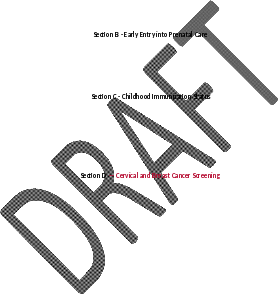 Section
A – Age Categories for Prenatal Care Patients: Demographic
Characteristics of Prenatal Care Patients
Section
A – Age Categories for Prenatal Care Patients: Demographic
Characteristics of Prenatal Care Patients
Line |
Age |
Number of Patients (a) |
1 |
Less than 15 years |
|
2 |
Ages 15-19 |
|
3 |
Ages 20-24 |
|
4 |
Ages 25-44 |
|
5 |
Ages 45 and over |
|
6 |
Total Patients (Sum of Lines 1-5) |
|
Line |
Early Entry into Prenatal Care |
Women Having First Visit with Health Center (a) |
Women Having First Visit with Another Provider (b) |
7 |
First Trimester |
|
|
8 |
Second Trimester |
|
|
9 |
Third Trimester |
|
|
Line |
Childhood Immunization Status |
Total Patients with 2nd Birthday (a) |
Number Charts Sampled or EHR Total (b) |
Number of Patients Immunized (c) |
10 |
MEASURE: Percentage of children 2 years of age who received age appropriate vaccines by their 2nd birthday |
|
|
|
Line |
Cervical Cancer Screening |
Total Female Patients Aged 23 through 64 (a) |
Number Charts Sampled or EHR Total (b) |
Number of Patients Tested (c) |
11 |
MEASURE: Percentage of women 23- 64 years of age who were screened for cervical cancer |
|
|
|
Line |
Breast Cancer Screening |
Total Female Patients Aged 50 through 74 (a) |
Number Charts Sampled or EHR total (b) |
Number of Patients with Mammogram (c) |
11a |
MEASURE: Percentage of women 50- 74 years of age who had a mammogram to screen for breast cancer |
|
|
|
Section E - Weight Assessment and Counseling for Nutrition and Physical Activity of Children and Adolescents
Line |
Weight Assessment and Counseling for Nutrition and Physical Activity for Children and Adolescents |
Total Patients Aged 3 through 17 (a) |
Number Charts Sampled or EHR Total (b) |
Number of Patients with Counseling and BMI Documented (c) |
12 |
MEASURE: Percentage of patients 3– 17 years of age with a BMI percentile and counseling on nutrition and physical activity documented |
|
|
|
 Section
F – Preventive Care and Screening: Body Mass Index (BMI)
Screening and Follow-Up Plan
Section
F – Preventive Care and Screening: Body Mass Index (BMI)
Screening and Follow-Up Plan
Line |
Preventive Care and Screening: Body Mass Index (BMI) Screening and Follow-Up Plan |
Total Patients Aged 18 and Older (a) |
Number Charts Sampled or EHR Total (b) |
Number of Patients with BMI Charted and Follow-Up Plan Documented as Appropriate (c) |
13 |
MEASURE: Percentage of patients 18 years of age and older with (1) BMI documented and (2) follow-up plan documented if BMI is outside normal parameters |
|
|
|
Section G – Preventive Care and Screening: Tobacco Use: Screening and Cessation Intervention
Line |
Preventive Care and Screening: Tobacco Use: Screening and Cessation Intervention |
Total Patients Aged 18 and Older (a) |
Number Charts Sampled or EHR Total (b) |
Number of Patients Assessed for Tobacco Use and Provided Intervention if a Tobacco User (c) |
14a |
MEASURE: Percentage of patients aged 18 years of age and older who (1) were screened for tobacco use one or more times within 24 months, and (2) if identified to be a tobacco user received cessation counseling intervention |
|
|
|

Section
H – Use of Appropriate Medications for Asthma
|
Use
of
Appropriate
Medications
for
|
|
|
|
|
|
|
|
|
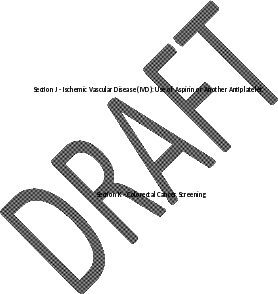 Section
I - Statin Therapy for the Prevention and Treatment of Cardiovascular
Disease
Section
I - Statin Therapy for the Prevention and Treatment of Cardiovascular
Disease
Line |
Statin Therapy for the Prevention and Treatment of Cardiovascular Disease |
Total Patients Aged 21 and Older at High Risk of Cardiovascular Events (a) |
Number Charts Sampled or EHR Total (b) |
Number of Patients Prescribed or On Statin Therapy (c) |
17a |
MEASURE: Percentage of patients 21 years of age and older at high risk of cardiovascular events who were prescribed or were on statin therapy |
|
|
|
Line |
Ischemic Vascular Disease (IVD): Use of Aspirin or Another Antiplatelet |
Total Patients Aged 18 and Older with IVD Diagnosis or AMI, CABG, or PCI Procedure (a) |
Number Charts Sampled or EHR Total (b) |
Number of Patients with Documentation of Aspirin or Other Antiplatelet Therapy (c) |
18 |
MEASURE: Percentage of patients 18 years of age and older with a diagnosis of IVD or AMI, CABG, or PCI procedure with aspirin or another antiplatelet |
|
|
|
Line |
Colorectal Cancer Screening |
Total Patients Aged 50 through 75 (a) |
Number Charts Sampled or EHR Total (b) |
Number of Patients with Appropriate Screening for Colorectal Cancer(c) |
19 |
MEASURE: Percentage of patients 50 through 75 years of age who had appropriate screening for colorectal cancer |
|
|
|


 Section
L - HIV Measures
Section
L - HIV MeasuresLinkage
to Care
Line |
HIV Linkage to Care |
Total Patients First Diagnosed with HIV (a) |
Number Charts Sampled or EHR Total (b) |
Number of Patients Seen Within 30 Days of First Diagnosis of HIV (c) |
20 |
MEASURE: Percentage of patients whose first ever HIV diagnosis was made by health center staff between October 1 of the prior year and September 30 of the measurement year and who were seen for follow-up treatment within 30 days of that first- ever diagnosis |
|
|
|
Line |
HIV Screening |
Total Patients Aged 15 through 65 (a) |
Charts Sampled or EHR Total (b) |
Number of Patients Tested for HIV (c) |
20a |
MEASURE: Percentage of patients 15-65 years of age who have been tested for HIV within that age range |
|
|
|
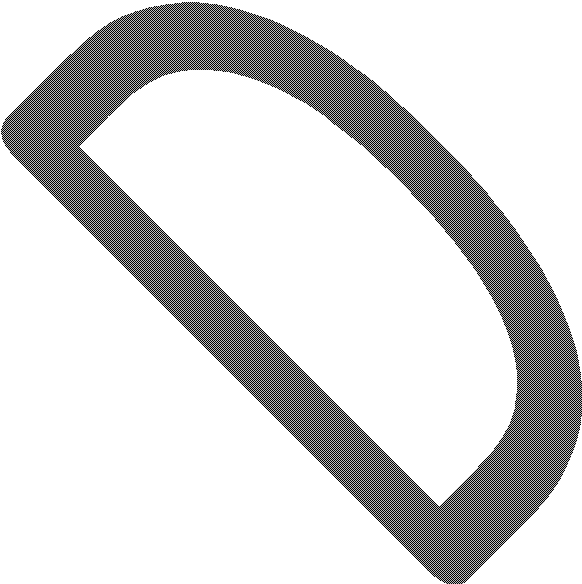
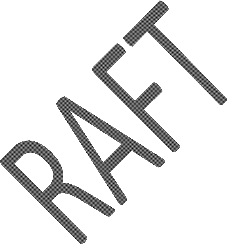 Section
M –
Section
M – Preventive
Care and Screening: Screening for Depression and Follow-Up
PlanDepression
Measures
Line |
Preventive Care and Screening: Screening for Depression and Follow-Up Plan |
Total Patients Aged 12 and Older (a) |
Number Charts Sampled or EHR Total (b) |
Number of Patients Screened for Depression and Follow-Up Plan Documented as Appropriate (c) |
21 |
MEASURE: Percentage of patients 12 years of age and older who were (1) screened for depression with a standardized tool and, if screening was positive, (2) had a follow-up plan documented |
|
|
|
Line |
Depression Remission at 12 Months |
Total Patients Aged 18 and Older with Major Depression or Dysthymia (a) |
Charts Sampled or EHR Total (b) |
Number of Patients who Reached Remission (c) |
21a |
MEASURE: Percentage of adolescent patients 12 to 17 years of age and adult patients 18 years of age or older with major depression or dysthymia who reached remission 12 months (+/- 60 days) after an index event |
[blank for] |
[blank for demonstration] |
[blank for demonstration] |
Section N – Dental Sealants for Children between 6–9 Years


Line |
Dental
Sealants for Children between 6–9 Year |
Total
Patients Aged 6 through 9 at Moderate to High Risk for Caries (a |
Number Charts Sampled or EHR Total (b) |
Number of Patients with Sealants to First Molars (c) |
22 |
MEASURE: Percentage of children 6 through 9 years of age at moderate to high risk of caries who received a sealant on a first permanent molar |
|
|
|
Table 7: Health Outcomes and Disparities
Reporting Period: January 1, 2019, through December 31, 2019
Line
Race
and Ethnicity
Prenatal
Care Patients Who Delivered During the Year
(1a)
Live
Births: <1500
grams
(1b)
Live
Births: 1500–2499
grams
(1c)
Live
Births: ≥2500
grams
(1d)
Hispanic/Latino
1a
Asian
1b1
Native
Hawaiian
1b2
Other
Pacific Islander
1c
Black/African
American
1d
American
Indian/Alaska Native
1e
White
1f
More
than One Race
1g
Unreported/Refused
to Report Race
Subtotal
Hispanic/Latino
Non-Hispanic/Latino
2a
Asian
2b1
Native
Hawaiian
2b2
Other
Pacific Islander
2c
Black/African
American
2d
American
Indian/Alaska Native
2e
White
2f
More
than One Race
2g
Unreported/Refused
to Report Race
Subtotal
Non-Hispanic/Latino
Unreported/Refused
to Report Race & Ethnicity
h
Unreported/Refused
to Report Race and Ethnicity
i
Total

Line |
Description |
Patients (a) |
0 |
HIV-Positive Pregnant Women |
|
2 |
Deliveries Performed by Health Center’s Providers |
|
 <section
divider cell>
<section
divider cell>
subtotal
<
 subtotal
subtotal
<blank for demonstrati >
Line
Race
and Ethnicity
Total
Patients 18 through 85 Years of Age with Hypertension
(2a)
Number
Charts Sampled or EHR Total
(2b)
Patients
with Hypertension Controlled
(2c)
Hispanic/Latino
1a
Asian
1b1
Native
Hawaiian
1b2
Other
Pacific Islander
1c
Black/African
American
1d
American
Indian/Alaska Native
1e
White
1f
More
than One Race
1g
Unreported/Refused
to Report Race
Subtotal
Hispanic/Latino
Non-Hispanic/Latino
2a
Asian
2b1
Native
Hawaiian
2b2
Other
Pacific Islander
2c
Black/African
American
2d
American
Indian/Alaska Native
2e
White
2f
More
than One Race
2g
Unreported/Refused
to Report Race
Subtotal
Non-Hispanic/Latino
Unreported/Refused
to Report Race and Ethnicity
h
Unreported/Refused
to Report Race and Ethnicity
i
Total

 subtotal
subtotal
<blank for demonstration>
 subtotal
subtotal
<blank for demonstration>
Line
Race
and Ethnicity
Total
Patients 18 through 75 Years of Age with Diabetes
(3a)
Number
Charts Sampled or EHR Total
(3b)
Patients
with HbA1c
>9%
or No Test During Year
(3f)
Hispanic/Latino
1a
Asian
1b1
Native
Hawaiian
1b2
Other
Pacific Islander
1c
Black/African
American
1d
American
Indian/Alaska Native
1e
White
1f
More
than One Race
1g
Unreported/Refused
to Report Race
Subtotal
Subtotal
Hispanic/Latino
Non-Hispanic/Latino
2a
Asian
2b1
Native
Hawaiian
2b2
Other
Pacific Islander
2c
Black/African
American
2d
American
Indian/Alaska Native
2e
White
2f
More
than One Race
2g
Unreported/Refused
to Report Race
Subtotal
Subtotal
Non-
Hispanic/Latino
Unreported/Refused
to Report Race and Ethnicity
h
Unreported/Refused
to Report Race and Ethnicity
i
Total


 <blank
for demonstration>
<blank
for demonstration>
Table 8A: Financial Costs
Reporting Period: January 1, 2019, through December 31, 2019
Line
Cost
Center
Accrued
Cost (a)
Allocation
of Facility and Non- Clinical Support Services (b)
Total
Cost After Allocation of Facility and Non- Clinical Support
Services
(c)
Financial
Costs of Medical Care
1
Medical
Staff
2
Lab
and X-ray
3
Medical/Other
Direct
4
Total
Medical Care
Services (Sum
of Lines 1 through
3)
Financial
Costs of Other Clinical Services
5
Dental
6
Mental
Health
7
Substance
Use Disorder
8a
Pharmacy
not including pharmaceuticals
8b
Pharmaceuticals
9
Other
Professional (Specify:
)
9a
Vision
10
Total
Other Clinical
Services (Sum
of Lines 5 through
9a)
Financial
Costs of Enabling and Other Services
11a
Case
Management
11b
Transportation
11c
Outreach
11d
Patient
and Community Education
11e
Eligibility
Assistance
11f
Interpretation
Services
11g
Other
Enabling Services (Specify:
)
11h
Community
Health Workers
11
Total
Enabling Services
Cost (Sum
of Lines 11a through
11h)
12
Other
Related Services (Specify:
)
12a
Quality
Improvement
13
Total
Enabling and Other
Services (Sum
of Lines 11, 12, and
12a)

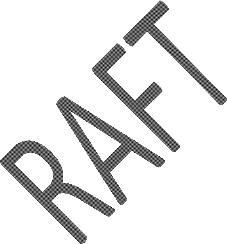 [blank
for section divide]
[blank
for section divide]


Line |
Cost Center |
Accrued Cost (a) |
Allocation of Facility and Non- Clinical Support Services (b) |
Total Cost After Allocation of Facility and Non- Clinical Support Services (c) |
Facility and Non-Clinical Support Services and Totals |
||||
14 |
Facility |
|
|
|
15 |
Non-Clinical Support Services |
|
|
|
16 |
Total Facility and Non-Clinical Support Services (Sum of Lines 14 and 15) |
|
|
|
17 |
Total Accrued Costs (Sum of Lines 4 + 10 + 13 + 16) |
|
|
|
18 |
Value of Donated Facilities, Services, and Supplies (specify: ) |
|
|
|
19 |
Total with Donations (Sum of Lines 17 and 18) |
|
|
|
Table 9D: Patient Related Revenue
 Reporting
Period: January 1, 2019, through December 31, 2019
Reporting
Period: January 1, 2019, through December 31, 2019
Line |
Payer Category |
Full Charges This Period (a) |
Amount Collected This Period (b) |
Retroactive S |
tlements, Receip |
s, and Paybacks |
c) |
Allowances (d) |
Sliding Fee Discounts (e) |
Bad Debt Write Off (f) |
Collection of Reconciliation/ Wrap-Around Current Year (c1) |
Collection of Reconciliation/ Wrap-Around Previous Years (c2) |
Collection of Other Payments: P4P, Risk Pools, etc. (c3) |
Penalty/ Payback (c4) |
|||||||
1 |
Medicaid Non-Managed Care |
|
|
|
|
|
|
|
|
|
2a |
Medicaid Managed Care (capitated) |
|
|
|
|
|
|
|
|
|
2b |
Medicaid Managed Care (fee- for-service) |
|
|
|
|
|
|
|
|
|
3 |
Total Medicaid (Sum of Lines 1 + 2a + 2b) |
|
|
|
|
|
|
|
|
|
4 |
Medicare Non-Managed Care |
|
|
|
|
|
|
|
|
|
5a |
Medicare Managed Care (capitated) |
|
|
|
|
|
|
|
|
|
5b |
Medicare Managed Care (fee- for-service) |
|
|
|
|
|
|
|
|
|
6 |
Total Medicare (Sum of Lines 4 + 5a + 5b) |
|
|
|
|
|
|
|
|
|
7 |
Other Public, including Non- Medicaid CHIP, Non-Managed Care |
|
|
|
|
|
|
|
|
|
8a |
Other Public, including Non- Medicaid CHIP, Managed Care (capitated) |
|
|
|
|
|
|
|
|
|
8b |
Other Public, including Non- Medicaid CHIP, Managed Care (fee-for-service) |
|
|
|
|
|
|
|
|
|
9 |
Total Other Public (Sum of Lines 7 + 8a + 8b) |
|
|
|
|
|
|
|
|
|
10 |
Private Non-Managed Care |
|
|
|
|
|
|
|
|
|
Line |
Payer Category |
Full Charges This Period (a) |
Amount Collected This Period (b) |
Retroactive S |
tlements, Receip |
s, and Paybacks |
c) |
Allowances (d) |
Sliding Fee Discounts (e) |
Bad Debt Write Off (f) |
Collection of Reconciliation/ Wrap-Around Current Year (c1) |
Collection of Reconciliation/ Wrap-Around Previous Years (c2) |
Collection of Other Payments: P4P, Risk Pools, etc. (c3) |
Penalty/ Payback (c4) |
|||||||
11a |
Private Managed Care (capitated) |
|
|
|
|
|
|
|
|
|
11b |
Private Managed Care (fee-for- service) |
|
|
|
|
|
|
|
|
|
12 |
Total Private (Sum of Lines 10 + 11a + 11b) |
|
|
|
|
|
|
|
|
|
13 |
Self-pay |
|
|
|
|
|
|
|
|
|
14 |
TOTAL (Sum of Lines 3 + 6 + 9 + 12 + 13) |
|
|
|
|
|
|
|
|
|
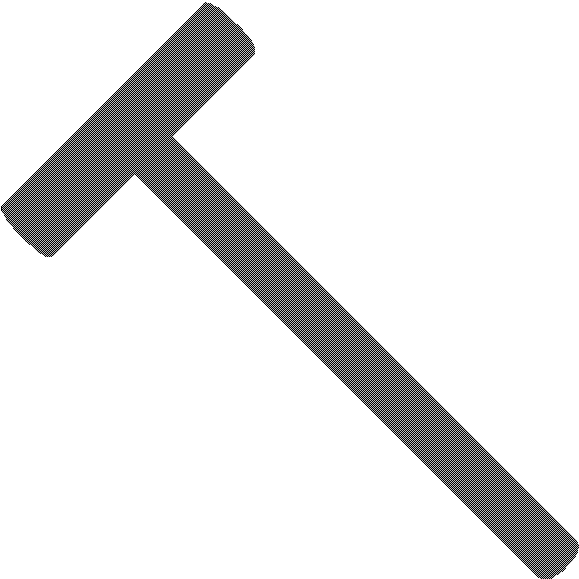
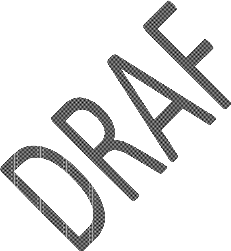
Table 9E: Other Revenues
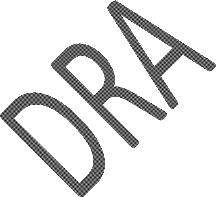
 Reporting
Period: January 1, 2019, through December 31, 2019
Reporting
Period: January 1, 2019, through December 31, 2019
Line |
Source |
Amount (a) |
|
BPHC Grants (Enter Amount Drawn Down – Consistent with PMS 272) |
|
1a |
Migrant Health Center |
|
1b |
Community Health Center |
|
1c |
Health Care for the Homeless |
|
1e |
Public Housing Primary Care |
|
1g |
Total Health Center (Sum Lines 1a through 1e) |
|
1k |
Capital Development Grants, including School-Based Health Center Capital Grants |
|
1 |
Total BPHC Grants (Sum of Lines 1g + 1k) |
|
|
Other Federal Grants |
|
2 |
Ryan White Part C HIV Early Intervention |
|
3 |
Other Federal Grants (specify: ) |
|
3a |
Medicare and Medicaid EHR Incentive Payments for Eligible Providers |
|
5 |
Total Other Federal Grants (Sum of Lines 2–3a) |
|
|
Non-Federal Grants or Contracts |
|
6 |
State Government Grants and Contracts (specify: ) |
|
6a |
State/Local Indigent Care Programs (specify: ) |
|
7 |
Local Government Grants and Contracts (specify: ) |
|
8 |
Foundation/Private Grants and Contracts (specify: ) |
|
9 |
Total Non-Federal Grants and Contracts (Sum of Lines 6 + 6A + 7 + 8) |
|
10 |
Other Revenue (non-patient related revenue not reported elsewhere) (specify: ) |
|
11 |
Total Revenue (Sum of Lines 1 + 5 + 9 + 10) |
|
Appendix D: Health Center Health Information Technology (HIT) Capabilities
Instructions
The HIT Capabilities Form includes a series of questions on HIT capabilities, including EHR interoperability and eligibility for Meaningful Use. The HIT Form must be completed and submitted as part of the UDS submission. The form includes questions about the health center’s implementation of an EHR, certification of systems, and how widely adopted the system is throughout the health center and its providers.
Questions
 The
following questions appear in the EHBs. Complete them before you file
the UDS Report. Instructions for the HIT questions are on-screen in
EHBs as you complete the form. Respond to each question based on your
health center status as of December 31.
The
following questions appear in the EHBs. Complete them before you file
the UDS Report. Instructions for the HIT questions are on-screen in
EHBs as you complete the form. Respond to each question based on your
health center status as of December 31.
Does your center currently have an Electronic Health Record (EHR) system installed and in use?
Yes, installed at all sites and used by all providers
Yes, but only installed at some sites or used by some providers
No
If the health center installed it, indicate if it was in use by December 31, by:
Installed at all sites and used by all providers: For the purposes of this response, “providers” mean all medical providers, including physicians, nurse practitioners, physician assistants, and certified nurse midwives. Although some or all of the dental, mental health, or other providers may also be using the system, as may medical support staff, this is not required to choose response a. For the purposes of this response, “all sites” means all permanent sites where medical providers serve health center medical patients and does not include administrative-only locations, hospitals or nursing homes, mobile vans, or sites used on a seasonal or temporary basis. You may check this option even if a few, newly hired, untrained employees are the only ones not using the system.
Installed at some sites or used by some providers: Select option b if one or more permanent sites did not have the EHR installed, or in use (even if this is planned), or if one or more medical providers (as defined above) do not yet use the system. When determining if all providers have access to the system, the health center should also consider part-time and locum providers who serve clinic patients. Do not select this option if the only medical providers who did not have access were those who were newly hired and still being trained on the system.
Select “no” if no EHR was in use on December 31 even if you had the system installed and training had started.
This question seeks to determine whether the health center installed an EHR by December 31 and, if so, which product is in use, how broad is access to the system, and what features are available and in use. Do not include PMS or other billing systems even though they can often produce much of the UDS data. If the health center purchased an EHR, but has not yet placed it into use, answer “no.”
28
 If
a system is in use (i.e., if a or b has been selected above),
indicate it has been certified by the Office of the National
Coordinator - Authorized Testing and Certification Bodies.
If
a system is in use (i.e., if a or b has been selected above),
indicate it has been certified by the Office of the National
Coordinator - Authorized Testing and Certification Bodies.
1a. Is your system certified by the Office of the National Coordinator for Health IT (ONC) Health IT Certification Program?
Yes
No
 Health
centers are to indicate in the blanks the vendor, product name,
version number, and ONC-certified health IT product list number.
(More information is available at
https://chpl.healthit.gov/#/search).
If you have more than one EHR (if, for example, you acquired another
practice with its own EHR), report the EHR that will be the successor
system.
Health
centers are to indicate in the blanks the vendor, product name,
version number, and ONC-certified health IT product list number.
(More information is available at
https://chpl.healthit.gov/#/search).
If you have more than one EHR (if, for example, you acquired another
practice with its own EHR), report the EHR that will be the successor
system.
1a1. Vendor
1a2. Product Name 1a3. Version Number
1a4. ONC-certified Health IT Product List Number
1b. Did you switch to your current EHR from a previous system this year?
Yes
No
If “yes, but only at some sites or for some providers” is selected above, a box expands for health centers to identify how many sites have the EHR in use and how many (medical) providers are using it. Please enter the number of sites (as defined above) where the EHR is in use and the number of providers who use the system (at any site). Include part-time and locum medical providers who serve clinic patients. Count a provider who has separate login identities at more than one site as just one provider.
1c. Do you use more than one EHR or data system across your organization?
If yes, what is the reason?
Second EHR/data system is used during transition to primary EHR
Second EHR/data system is specific to one service type (e.g. dental, behavioral health)
Second EHR/data system is used at specific sites with no plan to transition
 Other
(please
specify)
Other
(please
specify)
How
many sites have the EHR system in use?
1d. Is your EHR up to date with the latest
software and system patches?How
many providers use
the EHR system?
1e.
When do you plan?
to install the EHR system?
29


With
reference to your EHR, BPHC would like to know if your system has
each of the specified
capabilities that relate to the
CMS Meaningful Use criteria for EHRs and if you are using them
(more information on Meaningful
Use). For each
capability, indicate:
a. Yes
if your system has
this capability and it is being used by your center; b. No
if your system does
not have the capability or it is not being used; or
Not sureif you do not know if the capability is built in and/or do not know if your center is using it.

Select
“a” (has the capability and it is being used) if the
software can perform the function and
some or all of your medical
providers are using it. It is not necessary for all providers to be
using a
specific capability in order to select “a.”
Select “b” or “c”
if the capability is not present in the software, if the capability
is present but still
unused, or if it is not currently in use by any medical providers at
your center. Select “b” or
“c” only if none of
the providers use the function.
Does your center send prescriptions to the pharmacy electronically? (Do not includefaxing.) a.Yes
NoNotsure
Does your center use computerized, clinical decision support, such as alerts for drug allergies, checks for drug-drug interactions, reminders for preventive screening tests, or other similarfunctions?Yesb.No
c.
Not sure
Which
ith whichof the following key providers/health care settings does your center electronically exchange clinical information with? (Select all that apply)Hospitals/Emergency rooms
Specialty clinicians
Other primary care providers d. Labs or imaging
c.e.
Health information exchange (HIE)
d.f.
None of the above
e.g.Other
(please describe
)
Does your center engage patients through health IT in any of the following ways? (Select all that apply)
Patient portals
30
Kiosks
Secure messaging
Other (please describe )
No, we do not engage patients using HIT
Question removed.
How do you collect data for UDS clinical reporting (Tables 6B and 7)?
 We
use the EHR to extract automated
reports
We
use the EHR to extract automated
reportsWe use the EHR but only to access individual patient charts
We use the EHR in combination with another data analytic system
We do not use the EHR
Question removed.
Question removed.
How does your health center utilize HIT and EHR data beyond direct patient care? (Select all that apply)
Quality improvement
Population health management
Program evaluation
Research
Other (please describe )
We do not utilize HIT or EHR data beyond direct patient care
Does your health center collect data on individual patients’ social risk factors, outside of the data reportable in the UDS?
Yes
No, but we are in planning stages to collect this information
No, we are not planning to collect this information
31

 Which
standardized assessment(s) to collect information on the social
determinants of health or social risk factors,
if any, do you use? (Select all that apply)
Which
standardized assessment(s) to collect information on the social
determinants of health or social risk factors,
if any, do you use? (Select all that apply)Accountable Health Communities Screening Tools
Upstream Risks Screening Tool and Guide
iHELP
Recommend Social and Behavioral Domains for EHRs
 Protocol
for Responding to and Assessing Patients’ Assets, Risks, and
Experiences (PRAPARE)
Protocol
for Responding to and Assessing Patients’ Assets, Risks, and
Experiences (PRAPARE)Well Child Care, Evaluation, Community Resources, Advocacy Referral, Education (WE CARE)
WellRx
g.h.Health
Leads Screening Toolkit
h.i.
Other (please
describe )
j. We do not use a standardized screener
12a. Please provide the total number of patients that screened positive for the following:
Food insecurity
Housing insecurity
Financial strain
Lack of transportation/access to public transportation
12b. If you do not use a standardized assessment to collect this information, please comment why (Select all that apply)
Have not considered/unfamiliar with assessments
Lack of funding for addressing these unmet social needs of patients c. Lack of training for staff to discuss these issues with patients
d. Inability to include in patient intake and clinical workflow e. Not needed
f. Other (Please specify: )
Does your center integrate a statewide Prescription Drug Monitoring Program (PDMP) database into the health information systems such as Health Information Exchanges,
32
 electronic
health record (EHR) systems, and/or pharmacy dispensing software
(PDS) to streamline
provider access to controlled substance prescriptions?
electronic
health record (EHR) systems, and/or pharmacy dispensing software
(PDS) to streamline
provider access to controlled substance prescriptions?
Yes b. No
c. Not sure

33
Appendix E: Other Data Elements Instructions
Health centers are becoming increasingly diverse
 and
comprehensive in the care and services provided. These questions
capture the changing landscape of healthcare centers to include
expanded services and delivery systems.
and
comprehensive in the care and services provided. These questions
capture the changing landscape of healthcare centers to include
expanded services and delivery systems.
Questions
Report on these data elements as part of your UDS submission. Topics include medication- assisted treatment (MAT), telehealth, and outreach and enrollment assistance. Respond to each question based on your health center status as of December 31.
Medication-Assisted Treatment (MAT) for Opioid Use Disorder
How many physicians, certified nurse practitioners, and physician assistants,1
on-site or with whom the health center has contracts, have obtained a Drug Addiction Treatment Act of 2000 (DATA) waiver to treat opioid use disorder with medications specifically approved by the U.S. Food and Drug Administration (FDA) for that indication?
How many patients received medication- assisted treatment for opioid use disorder from a physician, certified nurse practitioner, or physician assistant, with a DATA waiver working on behalf of the health center?

1 With the enactment of the Comprehensive Addiction and Recovery Act of 2016, Public Law 114-198, opioid treatment prescribing privileges have
Did your organization use telemedicine to provide remote clinical care services?
(The term “telehealth” includes “telemedicine” services but encompasses a broader scope of remote healthcare services. Telemedicine is specific to remote clinical services whereas telehealth may include remote non-clinical services, such as provider training, administrative meetings, and continuing medical education, in addition to clinical services.)
Yes
2a1. Who did you use telemedicine to communicate with? (Select all that apply)
Patients at remote locations from your organization (e.g., home telehealth, satellite locations)
Specialists outside your organization (e.g., specialists at referral centers)
2a2. What telehealth technologies did you use? (Select all that apply)
Real-time telehealth (e.g., live videoconferencing)
Store-and-forward telehealth (e.g., secure email with photos or videos of patient examinations)
Remote patient monitoring
Mobile Health (mHealth)
been extended beyond physicians to include certain qualifying nurse practitioners (NPs) and physician assistants (PAs).
34
2a3. What primary telemedicine services were used at your organization? (Select all that apply)
Primary care
Oral health
Behavioral health: Mental health
 Behavioral
health: Substance use disorder
Behavioral
health: Substance use disorderDermatology
Chronic conditions
Disaster management
Consumer health education
Provider-to-provider consultation
Radiology
Nutrition and dietary counseling
Other (Please specify:
)
No. If you did not have telemedicine services, please comment why (Select all that apply).
Have not considered/unfamiliar with telehealth service options
Policy barriers (Select all that apply) i.Lack of or limited reimbursement ii.Credentialing, licensing, or
privileging iii.Privacy and security
iv.Other (Please specify:
)
Inadequate broadband/ telecommunication service (Select all that apply)
Cost of service ii.Lack of infrastructure iii.Other (Please specify:
)
Lack of funding for telehealth equipment
Lack of training for telehealth services
Not needed
Other (Please specify:
)
Provide the number of all assists provided during the past year by all trained assisters (e.g., certified application counselor or equivalent) working on behalf of the health center (employees, contractors, or volunteers), regardless of the funding source that is supporting the assisters’ activities. Outreach and enrollment assists are defined as customizable education sessions about affordable health insurance coverage options (one-on-one or small group) and any other assistance provided by a health center assister to facilitate enrollment.
Enter number of assists
Note: Assists do not count as visits on the UDS tables.
35
Appendix F: Workforce Instructions
It is important to understand the current state of health center workforce training and different
staffing models to better support recruitment and retention of health center professionals. This section includes a series of questions on health center workforce.
 Questions
Questions
Report on these data elements as part of your UDS submission. Topics include health professional education/training and satisfaction surveys. Respond to each question based on your health center status as of December 31.
Does your health center provide health professional education/training? Health professional education/training does not include continuing education units.
Yes
No
1a. If yes, which category best describes your health center’s role in the health professional education/training process?
Sponsor2
Training site partner3
Other (please describe )
Please indicate the range of health professional education/training offered at your health center and how many individuals you have trained in each category within the last year.
-
a. Pre-Graduate/Certificate
b. Post-Graduate Training
Medical
[blank]
[blank]
1. Physicians
[blank for demonstration]
[blank for demonstration]
a. Family Physicians
[blank for demonstration]
[blank for demonstration]
b. General Practitioners
[blank for demonstration]
[blank for demonstration]
c. Internists
[blank for demonstration]
[blank for demonstration]
d. Obstetrician/Gynecologists
[blank for demonstration]
[blank for demonstration]
e. Pediatricians
[blank for demonstration]
[blank for demonstration]
f. Other Specialty Physicians
[blank for demonstration]
[blank for demonstration]
2. Nurse Practitioners
[blank for demonstration]
[blank for demonstration]
3. Physician Assistants
[blank for demonstration]
[blank for demonstration]
4. Certified Nurse Midwives
[blank for demonstration]
[blank for demonstration]
5. Registered Nurses
[blank for demonstration]
[blank for demonstration]
6. Licensed Practical Nurses/ Vocational Nurses
[blank for demonstration]
[blank for demonstration]
7. Medical Assistants
[blank for demonstration]
[blank for demonstration]
Dental
[blank]
[blank]

A sponsor hosts a comprehensive health profession education and/or training program, the implementation of which may require partnerships with other entities that deliver focused, time-limited education and/or training (e.g., a teaching health center with a family medicine residency program).
A training site partner delivers focused, time-limited education and/or training to learners in support of a comprehensive curriculum hosted by another health profession education provider (e.g., month-long primary care dentistry experience for dental students).
36
-
a. Pre-Graduate/Certificate
b. Post-Graduate Training
8. Dentists
[blank for demonstration]
[blank for demonstration]
9. Dental Hygienists
[blank for demonstration]
[blank for demonstration]
10. Dental Therapists
[blank for demonstration]
[blank for demonstration]
Mental Health and Substance Use Disorder
[blank]
[blank]
11. Psychiatrists
[blank for demonstration]
[blank for demonstration]
12. Clinical Psychologists
[blank for demonstration]
[blank for demonstration]
13. Clinical Social Workers
[blank for demonstration]
[blank for demonstration]
14. Professional Counselors
[blank for demonstration]
[blank for demonstration]
15. Marriage and Family Therapists
[blank for demonstration]
[blank for demonstration]
16. Psychiatric Nurse Specialists
[blank for demonstration]
[blank for demonstration]
17. Mental Health Nurse Practitioners
[blank for demonstration]
[blank for demonstration]
18. Mental Health Physician Assistants
[blank for demonstration]
[blank for demonstration]
19. Substance Use Disorder Personnel
[blank for demonstration]
[blank for demonstration]
Vision
[blank]
[blank]
20. Ophthalmologists
[blank for demonstration]
[blank for demonstration]
21. Optometrists
[blank for demonstration]
[blank for demonstration]
Other Professionals
[blank]
[blank]
22. Chiropractors
[blank for demonstration]
[blank for demonstration]
23. Dieticians/Nutritionists
[blank for demonstration]
[blank for demonstration]
24. Pharmacists
[blank for demonstration]
[blank for demonstration]
25. Other (please specify )
[blank for demonstration]
[blank for demonstration]
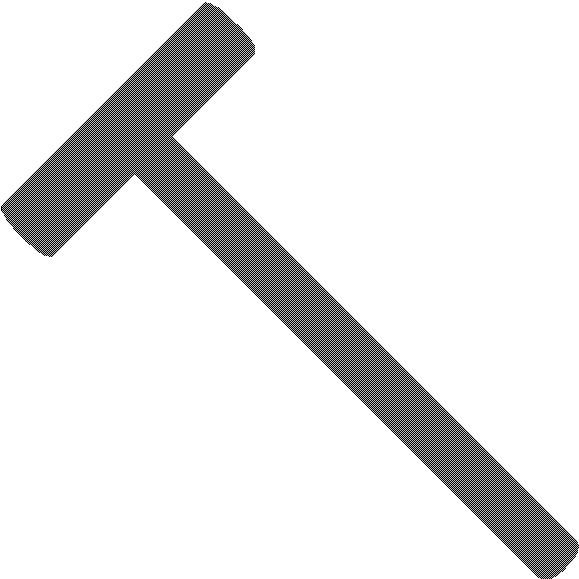
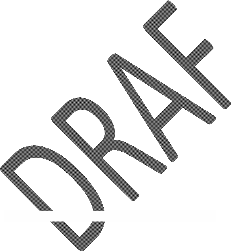 Provide
the number of health center staff serving as preceptors at your
health
center
Provide
the number of health center staff serving as preceptors at your
health
center
Provide the number of health center staff (non-preceptors) supporting health center training programs
How often does your health center implement satisfaction surveys for providers?
Monthly
Quarterly
Annually
We do not currently conduct provider satisfaction surveys
Other (please describe )
How often does your health center implement satisfaction surveys for general staff?
Monthly
Quarterly
Annually
We do not currently conduct staff satisfaction surveys
Other (please describe )
Public Burden Statement: An agency may not conduct or sponsor, and a person is not required to respond to, a collection of information unless it displays a currently valid OMB control number. The OMB control number for this project is 0915-0193. Public reporting burden for this collection of information is estimated to average xx hours per response, including the time for reviewing instructions, searching existing data sources, and completing and reviewing the collection of information. Send comments regarding this burden estimate or any other aspect of this collection of information, including suggestions for reducing this burden, to HRSA Reports Clearance Officer, 5600 Fishers Lane, Room 14N136B, Rockville, Maryland, 20857.
37

38
| File Type | application/vnd.openxmlformats-officedocument.wordprocessingml.document |
| File Title | Microsoft Word - 2020 UDS Tables - Tracked 8.2.19 |
| Author | NGathua |
| File Modified | 0000-00-00 |
| File Created | 2021-01-14 |
© 2025 OMB.report | Privacy Policy